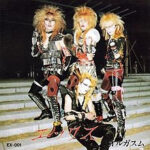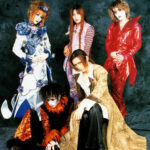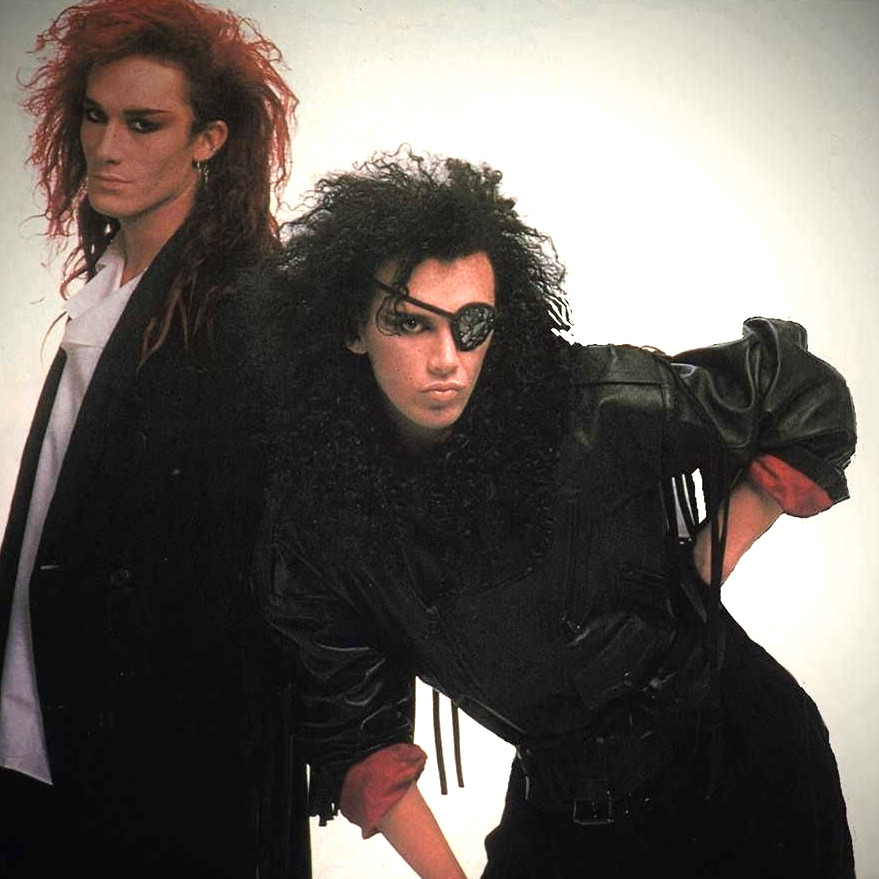Visual Kei
This page contains a brief explaination of the visual-kei genre, but from a “MM-point-of-view”: We look at VK (visual-kei) from the perspective of MALICE MIZER. The context behind the music will be explained, which makes you understand and appreciate the music much more. This is NOT a general, complete history of visual-kei: It’s aimed towards MM fans who wish to learn more about the movement. Please do NOT copy this information on other sites.
As you might have read already on-line, “MALICE MIZER” is part of the “visual-kei” (or just “visual kei”) movement. VK is a musical (and visual) movement that sees its roots in early-to-mid-80s Japan, and while its peak was in the mid-to-late 90s, it is still very active and loved today, not only in Japan, but also all over the world.
What sets visual-kei apart from other musical movements, such as American “punk” or “grunge”, is that the musical genres & styles of visual-kei aren’t standardised. There is no “true” visual-kei sound, genre, style, or look. Visual-kei bands make music in all kinds of genres: Thrash/power/heavy/speed metal, metalcore, hard rock, goth rock, punk-rock, pop-rock, pop, even darkwave and electronic, and much more!
The music of visual-kei can be extremely hard, raw and agressive, but also very soft and sentimental. A lot of bands have their own unique sound; a mix of different musical influences, with a personal tiwst.
MALICE MIZER is a prime, and maybe the best example of that in the entire visual-kei scene; With all kinds of musical influences: Goth rock, Baroque classical, French chanson/pop, darkwave, synth-pop, metal, and lots of other influences. Other than the music, the extreme amount of visual styles of MM are definitely the most varied of the entire visual-kei scene, with outfits of all colours, styles and time periods.
MALICE MIZER’s musical genre is impossible to categorise exactly. Lots of songs are a complete mish-mash of different influences, genres, instrumentations, and sounds: No single label or name fits their songs or styles.
This complete mixture of influences makes the band and its creativity really stand out from any other music, not only in visual-kei, but also the entire worldwide music industry. It’s nearly impossible to find more artists that fill the exact-same musical needs that MALICE MIZER fulfills with its listeners. So you better be happy with the only-four studio albums that they made, full of one-of-a-kind songs replicated nowhere else hahaha!!!
While a lot of visual-kei bands, including MALICE MIZER, all have their unique sound, there are still a lot of musical similarities and conventions shared between a lot of bands. A lot of aspects of the composition style; Such as common chord progressions, ways to build a melody, or rythmic patterns are shared between tons of visual-kei bands spanning all eras and genres. Also, ways of arranging these compositions contains a lot of cliché’s typical to visual-kei. The singing styles are also shared between a lot of vocalists, just like the playing styles and sounds of guitars, basses, synthesizers, and drums/drum machines…
Some of these musical aspects can also be found in other, non-VK Japanese music from the same times: City Pop, Kayoukyoku (歌謡曲), non-VK Japanese metal and rock, anime and movie soundtracks, and of course, video-game music.
And some musical and visual aspects of visual-kei actually come from Western 70s/80s/90s music, such as Glam Rock, New Wave, Hair Metal, and others. Some specific artists that had a big impact are David Bowie, SEX PISTOLS, Mötley Crüe, KISS, Dead or Alive, The Cure, Nirvana, Marilyn Manson… But these are just a few names, there’s many, many more…
There’s also a lot of different substyles of visual-kei, such as kuro-kei, nagoya-kei, angura-kei, and many more… MALICE MIZER mostly is, and also was one of the first “tanbi-kei” bands, a substyle that contains a lot of fancy costumes inspired by European culture and fashion.
But what really makes a visual-kei band truely visual-kei, not “J-rock/metal/pop” (like many bands), is the conformity and similarities of the many bands in their concepts, visuals, fandoms, typical venues, marketing strategies, and so much more…
But there’s still exceptions… Actually, what might be the most important factor to know if a band is visual-kei or not, is if they just simply call themselves, so identify themselves as visual-kei! Even if there are a lot of differences with other VK bands… And yes, that even includes some non-Japanese bands!

A photograph (not my scan) of X (X JAPAN) from 1986. It shows the early metal roots of visual-kei.

A photograph of MALICE MIZER from 1997, a perfect example of the visual uniqueness of the visual-kei movement

A photograph of LAREINE from 1998, another example of a unique visual-kei band

A photograph of Dead or Alive (not my scan), an English band that was very popular in 80s Japan, and had a lot of influence on visual-kei

A photograph of D≒SIRE from 1994, a very influential band

